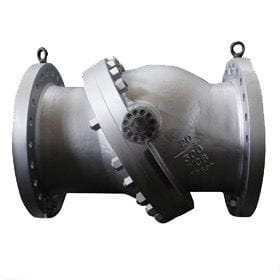Structural Principles of Tilting Disc Check Valves

When the pressure of the medium reaches the working pressure of the tilting disc check valve, the valve disc will open. When the pressure of the medium decreases, the butterfly tilting disc valve disc will automatically close. Because the valve disc and the metal valve seat have the characteristics of a triple eccentric butterfly valve, this structure enables the valve disc to perform a pendulum movement. There is no friction or sliding contact during engagement and separation of the disc beveled seat and funnel disc. When closing, it can quickly achieve sealing with the valve seat almost without impact and collision without external force. At the same time, it has the characteristics of large flow and small flow resistance.
Features
1. The tilting disc check valve can minimize the impact phenomenon.
2. The tilting disc check valve is suitable for horizontal or vertical pipelines.
3. The tilting disc check valve operates automatically and can be opened flexibly. It opens under the pressure of the fluid flow rate and closes under the action of gravity.
The tilting disc check valve has the disadvantage of high cost, and it is more difficult to repair than the swing check valve. Therefore, tilting disc check valves are usually limited to occasions where swing check valves cannot meet the requirements.